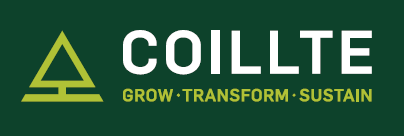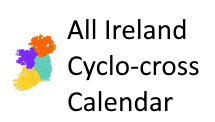 IMBA developed the “Rules of the Trail” to promote responsible and courteous conduct on the trails. These guidelines for trail behaviour are recognized around the world and just about every issue we encounter as mountain bikers relates in some way to one of these principles. We have attempted to give a bit more detail on some of the specific issues faced by bikers in Ireland.
IMBA developed the “Rules of the Trail” to promote responsible and courteous conduct on the trails. These guidelines for trail behaviour are recognized around the world and just about every issue we encounter as mountain bikers relates in some way to one of these principles. We have attempted to give a bit more detail on some of the specific issues faced by bikers in Ireland.
- Ride on Open Trails Only
- Leave No Trace
- Control Your Bicycle
- Always Yield Trail.
- Never Scare Animals
- Plan Ahead
1. Ride on Open trails Only
Respect trail and road closures (ask if uncertain). Avoid trespassing on private land and obtain permits or other authorization as may be required.
It is an undeniable fact that the majority of mountain biking in Ireland occurs on unauthorised trails. This is quite simply due to the fact that there are at present very few places where you are permitted to ride. There are many groups working tirelessly to try and open up more authorised trails, but until such time as more trails become available mountain biking responsibly in Ireland requires a good deal of common sense.
There are some key points to bear in mind:
The trails section of this site will be kept up to date on locations where biking is permitted. (Please contact us if you are aware of an area which we do not have listed where riding is permitted).
Be aware of who’s land you are riding on and what their view is on mountain biking. Some land owners will have a stated policy some may not. Some actively enforce this policy, others unofficially acknowledge our activities provided we act responsibly and adhere to the unwritten rules.
There is no substitute for local knowledge. If at all possible seek out local clubs who have been operating in the area and can inform you of the lay of the land give you the low down on the unwritten rules.
We will try and keep this site updated with details of clubs and other contacts around the country. If you would be willing to be put down as a contact for an area please let us know.
Most importantly use your common sense.
2. Leave No Trace
Practice low-impact cycling and be sensitive to the trail beneath you. Where possible, avoid wet and muddy trails as they are more vulnerable to damage. Stay on existing trails and do not create new ones or cut corners. Take your rubbish home.
For further information on outdoor ethics please go to LeavenotraceIreland.org.
If at all possible you should try and attend a Leave No Trace awareness course, they are very beneficial and you will learn things you didn’t realise, about when we are causing harm and when we are not.
There are a few key points. Litter is a massive problem and is one of the main reason we lose riding spots. Just so we are all clear, tear-offs are litter, power gel wrappers are litter. Punctured tubes and our broken parts are litter. That bottle of water you left at the top of a DH run is litter. Banana skins and orange peels are also very definitely litter. In short, if you brought it out, bring it back.
In terms of riding, be responsible, we all know when we are causing significant damage. We all know when a particular trail is getting hammered. Take weather and ground conditions in consideration when you are planning your route.
3. Control Your Bicycle
Inattention, for even a second, can cause problems. Obey all bicycle speed regulations and recommendations. Always wear a helmet and wear other safety gear as appropriate.
While this point is obviously hugely important for your own personal safety it also helps demonstrate that we can operate responsibly out on the trail. Even within the biking community the first and most obvious indication that a rider is not competent is riding with no helmet. This gives the impression of a lack of responsibility for both the riders own safety and that of other trail users. It may well be your head, but we will be the ones left trying to hold it together until the helicopter arrives.
4. Always Yield Trail
Let your fellow trail users know you’re coming. A friendly greeting or bell is considerate and works well; don’t startle others. Show your respect when passing by slowing to a walking pace or even stopping. Anticipate other trail users around corners or in blind spots. Yielding means slow down, establish communication, be prepared to stop if necessary and pass safely.
Most user conflict issues that occur come about due to the fact that other users are quite often surprised or alarmed by bikes. It is very easy to have a scenario where there biker believes he is in full control and acting responsibly yet the other user feels he is in danger and has had a close call. This is especially true in Ireland as to date differing users have had very little opportunity to become accustomed to sharing trails together.
Here are some factors to be cognisant of to help make sharing the trails a more rewarding experience for all concerned:
Be aware that quite often you will see the other user long before they see you. This means that while you may have slowed down and are in full control, they may still be alarmed when they realise you are there.
The sounds of bikes skidding, breaks squealing and suspension clanking can be quite alarming if the other user is not expecting it. This is especially true when dealing with horses.
Other users do not necessarily know the line you are planning on taking, or what your intentions are. While you may have plenty of time to slow down or you may have a line on the trails that will take you well away from the other user, they still may feel like a bike is bearing down on them.
You will often see the head and shoulders of adults down a trail, long before you realise they have children or pets running in front of them. This can lead to an unpleasant experience for all concerned.
Here are a few suggestions as how to deal with these problems:
Some trails are know walking and horse riding hotspots, you should bear this in mind when selecting your you route and in the manner you ride in the areas. Where possible avoid descending on heavily used walking trails at peak times.
Slow down as soon as you become aware that there is another user ahead on the trail.
Don’t ride flat out down trails where there is a chance you could startle or alarm another user. Quite often experienced groups of bikers will take turns sending a sweeper ahead on the trail. If they encounter another user they will stop themselves and wait for the rest of the group, slowing them in advance.
When passing other users establish communications, say hello. Don’t do anything sudden that will alarm them, such as skidding. In the case of horses sometimes event the clicking of gears can startle them, when passing them look to the rider for guidance on how to proceed.
If you encounter hostility don’t be brought down to that level. Proceed as a good natured responsible out door user and leave the other party to deal with their issues themselves.
Sometimes you will have to sacrifice your enjoyment of the trail and ride well below your capabilities for the benefit of those with whom you are sharing the trail. This is an inevitable consequence of responsible use, but don’t worry you will get plenty more opportunities to cut loose.
5. Never Scare Animals
Look out for animals as they may be startled by an unannounced approach, a sudden movement or a loud noise. Take special care when passing horses and follow directions from the riders (ask if uncertain). Leave gates as you found them or as marked.
If you are the first rider on a group to go through a gate don’t assume that the last rider will know whether it is to be left open or closed. Take the responsibility yourself to make sure the gate is left as it was found, or as marked.
Trails, especially in Ireland will often you across land where sheep or cattle are grazing. Be aware that bikes moving at speed can often startle these animals. Under no circumstances, ever chase sheep down a trail. Riding off-piste, especially across heather can be hugely damaging to nesting birds.
6. Plan Ahead
Be self-sufficient at all times. Know your equipment, your ability, the area in which you plan to ride and prepare accordingly. Keep your bike well maintained and carry spares, tools and supplies sufficient for the nature and duration of your ride.
While this point is obviously hugely important for your own personal safety it also helps demonstrate that we can operate within an area with minimal disruption. If land owners and land managers and constantly having to help rescue stranded bikers, open car parks after closing and are other wise inconvenienced it makes our long term use of the area all the more difficult.






